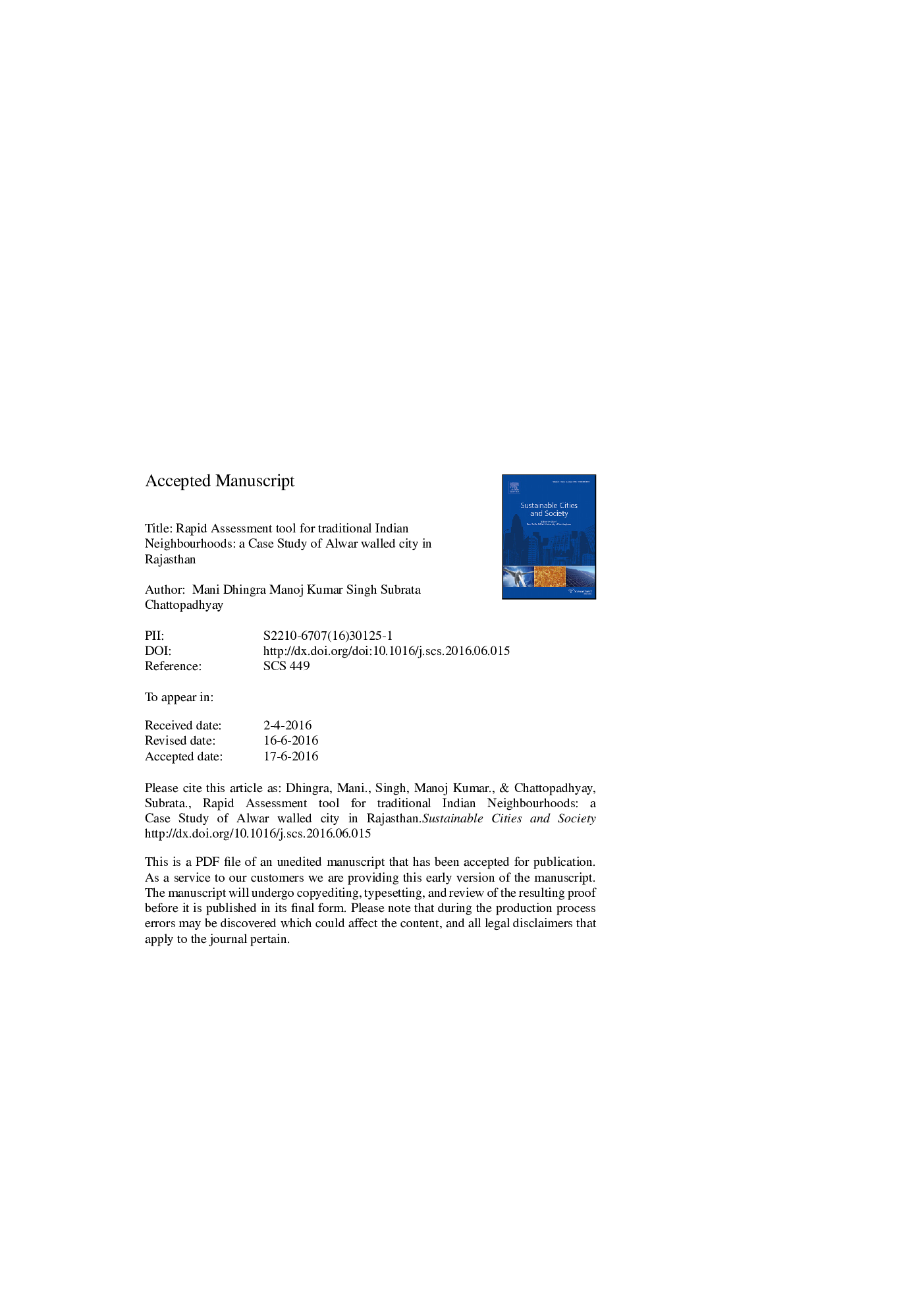| Article ID | Journal | Published Year | Pages | File Type |
|---|---|---|---|---|
| 6775890 | Sustainable Cities and Society | 2016 | 52 Pages |
Abstract
The formal urban planning framework for modern Indian cities is not enough for its historical cities which are usually characterised by multi-functional spaces, heterogeneous societies, compact urban form and diverse economic linkages. The study establishes the need of a microlevel assessment of old neighbourhoods for community-based urban regeneration. The historic walled city of Alwar in Rajasthan in India is selected as the case study where traditional lifestyle still prevails. A comprehensive methodology helps devising a Neighbourhood Vitality Tool for rapid assessment of identified Neighbourhood Planning Units (NPUs) with the help of vitality scores. GIS assisted analysis further helps in organising the spatial and factual data of each NPU in the form of an illustrative chart to help support local decision making. The proposed Rapid Assessment Tool for the historic neighbourhoods identifies their core urban issues as well as their underlying potential using simple colour coded matrix. The primary surveys for Alwar form the main inputs for the analysis and brings forth the challenges of vacant and dilapidated housing, traffic congestion and gentrification in the core city area. Such an indicator based assessment supported by visualization may help in quickly identifying the interventions at neighbourhood level and evaluate them for effective implementation.
Keywords
Related Topics
Physical Sciences and Engineering
Energy
Renewable Energy, Sustainability and the Environment
Authors
Mani Dhingra, Manoj Kumar Singh, Subrata Chattopadhyay,
